Welcome to our blog, where we’ll explore Bangladesh’s fascinating world of greenhouse farming. With its favorable Climate and growing population, Bangladesh is turning to innovative solutions like greenhouse farming to meet the demand for fresh produce. In this article, we’ll delve into the benefits and challenges of greenhouse farming and provide you with accurate and up-to-date data to understand the current landscape. We’ll cover everything from the advantages of controlled environments to the impact on crop yields and sustainability.
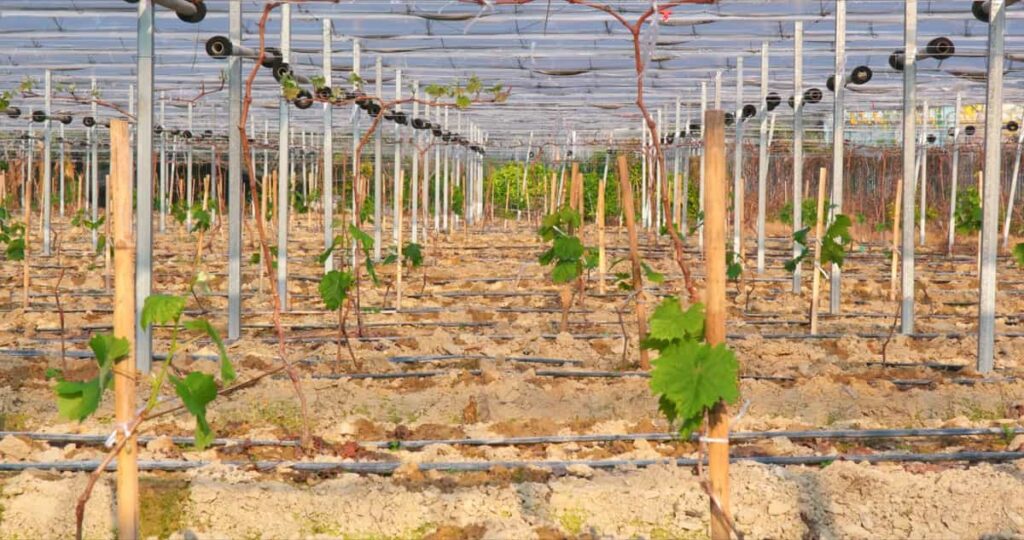
Bangladesh Agriculture Sector
Bangladesh has experienced consistent economic growth, with GDP growth ranging from 6% to 7% annually. Agriculture, which covers 70% of the country’s land, faces land loss, declining soil fertility, and salinization challenges. The pressure from urban and peri-urban expansion has decreased cropland area, with land being double-cropped in most areas. Rice is the dominant crop, followed by wheat, maize, jute, and vegetables. The country has achieved food security, with grain production tripling between 1972 and 2014.
However, challenges like limited access to high-quality foods and climate impacts continue to affect vulnerable populations. Bangladesh climate change, with increased risks from sea level rise, salinization, changing rainfall patterns, and extreme weather events. The agriculture sector, responsible for 39% of the country’s greenhouse gas emissions, remains the main source of emissions. However, the country needs help in societal dimensions, such as low Social Progress Index (SPI) scores and limited decision-making power.
Greenhouse Farming in Bangladesh
Greenhouse farming in Bangladesh has gained significant attention recently, particularly in vegetable and floriculture production. Research highlights the potential of greenhouse cultivation as an effective agricultural practice, offering benefits such as improved crop quality, reduced pest and disease incidences, and extended growing seasons. However, challenges like high initial investment costs and limited technical know-how exist.
The adoption of greenhouse technology has significantly increased, with over 8,000 hectares dedicated to greenhouse cultivation in Bangladesh. Farmers can optimize crop growth, enhance quality, and enable year-round production by creating a controlled environment through climate control systems. Different vegetables, including tomatoes, cucumbers, capsicums, and leafy greens, are successfully grown in greenhouses, along with flourishing floriculture production of roses, gerberas, and carnations for domestic and export markets.
The government has taken proactive measures to support greenhouse farming, including financial assistance, training programs, and technical support, aiming to enhance productivity, ensure food security, and generate income for farmers. However, challenges still need to be addressed, such as substantial initial investment costs and limited access to advanced technical knowledge, especially for small-scale farmers. Despite these obstacles, greenhouse farming in Bangladesh holds immense potential for sustainable agricultural development.
Highlights of Greenhouse Farming in Bangladesh
The Climate is the growing adoption of greenhouse farming in Bangladesh, with over 8,000 hectares of greenhouses covering over 2,000 hectares. These greenhouses primarily focus on vegetable and floriculture production, catering to domestic and export markets. Greenhouse farming offers numerous benefits, including improved crop quality, reduced pest, and disease incidences, extended growing seasons, and controlled environments.
The controlled environment optimizes crop growth and yields, while greenhouses protect crops from adverse weather conditions. The Bangladeshi government has taken proactive measures to support greenhouse farming, including financial assistance, training programs, and technical support. These efforts aim to enhance productivity, ensure food security, and generate income for farmers.
However, challenges include high initial investment costs and limited technical knowledge. Opportunities exist through research, training programs, and government initiatives to overcome these obstacles. Overall, greenhouse farming in Bangladesh holds immense potential for sustainable agricultural development, contributing to food security and economic growth.
In case you missed it: Sustainable Greenhouse Farming: The Future of Agriculture
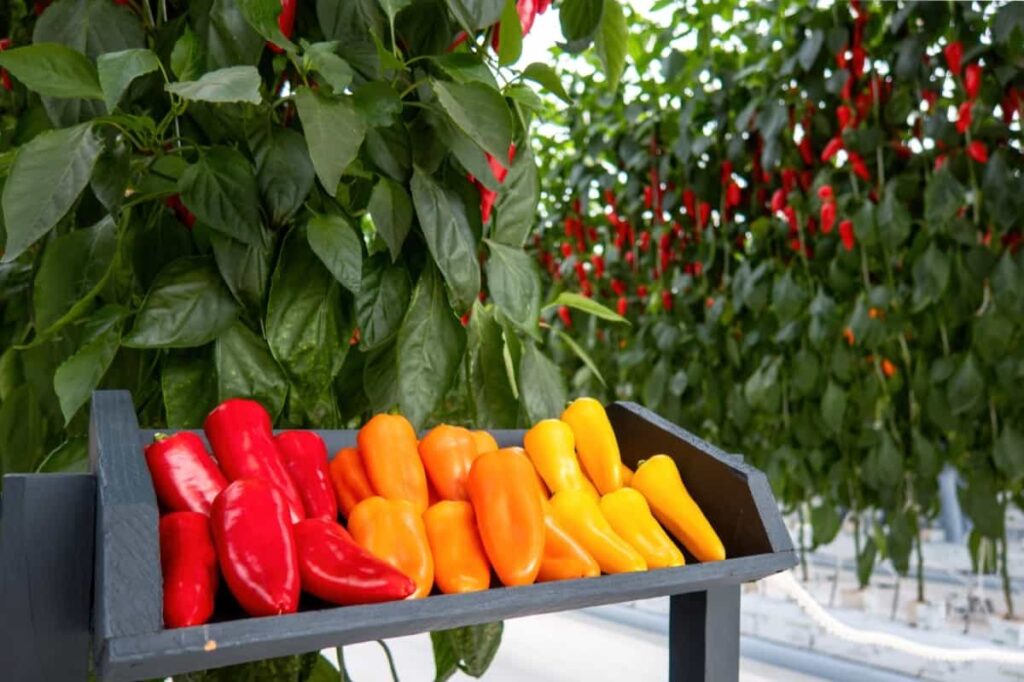
Types of Greenhouses in Bangladesh
Bangladesh uses Different greenhouses for agricultural purposes, including polyethylene film-covered, shade net, and naturally ventilated options. Polyethylene film-covered greenhouses are cost-effective and easy to construct, providing insulation and temperature regulation. Shade net greenhouses use shade netting to control sunlight intensity, protect crops from heat, and reduce water evaporation.
Naturally ventilated greenhouses rely on natural airflow for temperature regulation, with strategically placed openings or vents. Frames are typically made of locally available materials like bamboo, wood, or steel, with the choice based on factors like cost, durability, and availability.
Greenhouse Farming Techniques in Bangladesh
Greenhouse farming techniques in Bangladesh have witnessed significant advancements, as highlighted in a study focusing on vegetable and floriculture production in the country. Using different greenhouse farming techniques in Bangladesh, including protected cultivation, polyhouse systems, and low-cost tunnels.
These techniques enable farmers to create a controlled environment that optimizes crop growth and protects plants from adverse weather conditions, pests, and diseases. Protected cultivation involves using structures such as greenhouses, tunnels, or net houses to shield crops from external factors. This technique enhances crop quality, extends the growing season, and ensures higher yields by providing favorable conditions for plant growth.
Polyhouse systems, another widely used technique, employ structures covered with polyethylene films to create a controlled environment. These structures offer insulation, regulate temperature and humidity, and protect crops from external elements. Low-cost tunnels, on the other hand, provide an affordable option for small-scale farmers. These structures are typically constructed using locally available materials like bamboo, plastic sheets, or nets.
Low-cost tunnels protect crops while allowing for ventilation and maintaining favorable growing conditions. Adopting innovative techniques like drip irrigation, fertigation, and integrated pest management (IPM) in greenhouse farming. Drip irrigation ensures efficient water usage, fertigation combines irrigation with fertilization, and IPM focuses on eco-friendly pest control methods, reducing the reliance on chemical pesticides.
Sustainable Practices in Bangladesh Greenhouse Farming
Sustainable practices in greenhouse farming in Bangladesh are gaining popularity as farmers aim to minimize environmental impact while ensuring long-term productivity. Key practices include using organic fertilizers and biopesticides, conserving water resources through drip irrigation and rainwater harvesting, encouraging crop rotation and diversification, implementing integrated pest management (IPM) strategies, implementing energy-efficient technologies like solar-powered ventilation systems, and focusing on waste management.
In case you missed it: How to Maximize Profit in Greenhouse Farming: Take an Advantage of Future Farming
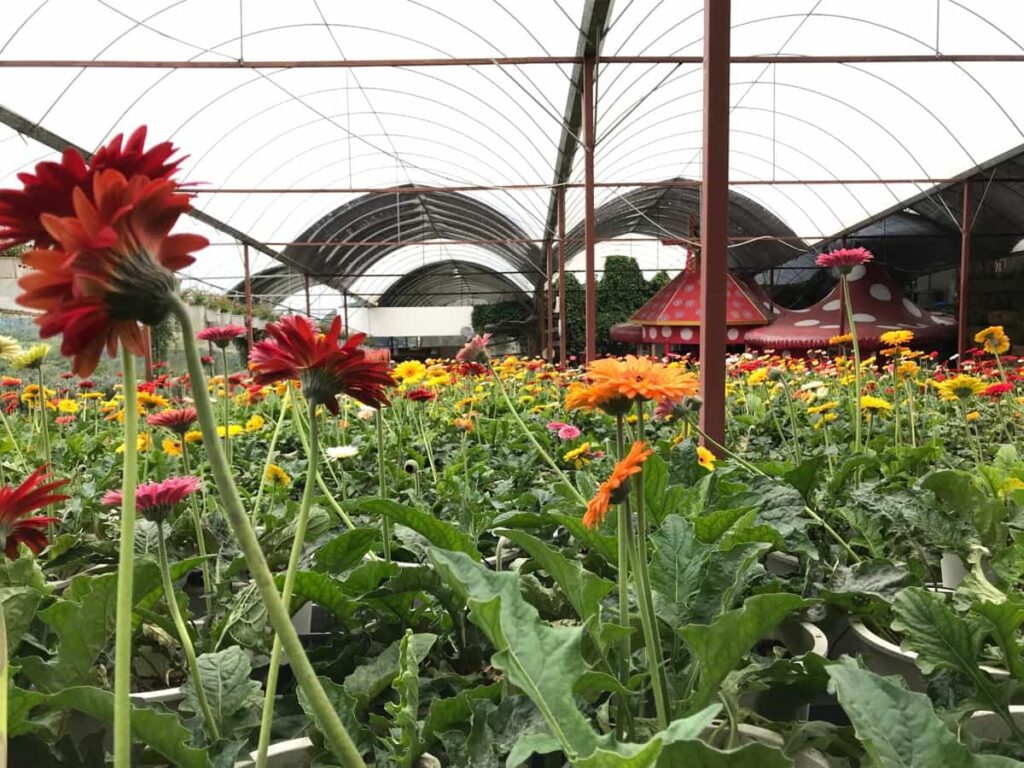
These practices promote soil health, reduce chemical residues, and maintain ecological balance. Additionally, they reduce greenhouse gas emissions and lower energy consumption. Waste management practices like composting agricultural waste and using bio-waste as organic fertilizers contribute to a circular economy and reduce waste accumulation. By adopting these sustainable practices, farmers in Bangladesh are reducing their ecological footprint, promoting long-term agricultural resilience, protecting biodiversity, and ensuring a sustainable future for greenhouse farming in Bangladesh.
Climate Control Systems for Bangladesh Greenhouses
Climate control systems are crucial in Bangladesh’s greenhouse farming, ensuring optimal crop growth conditions. Common systems include fan and pad cooling, automatic ventilation, heating, and shading. Fan and pad cooling uses fans and evaporative cooling pads to regulate temperature and humidity, while automatic ventilation uses motorized vents to maintain optimal conditions.
Heating systems provide warmth during colder seasons while shading systems control sunlight intensity. The choice of climate control systems depends on factors like specific crops grown, greenhouse size, and local climatic conditions.
Crop Selection for Bangladesh Greenhouse Farming
Vegetables like tomatoes, cucumbers, capsicums, and leafy greens like lettuce and spinach dominate greenhouse cultivation in Bangladesh. These crops thrive in controlled environments, resulting in higher yields, improved quality, and extended growing seasons. Flower production, including roses, gerberas, and carnations, has also grown in greenhouses due to domestic and export market demand.
Farmers in Bangladesh consider factors like consumer preferences, market prices, and potential returns when choosing crops for greenhouse cultivation. The suitability of crops for greenhouse conditions, including temperature, humidity, and light requirements, is also crucial in crop selection. Farmers aim to select crops that thrive in a controlled environment for optimal growth and productivity.
Pest and Disease Management in Bangladesh Greenhouse Farms
Pest and disease management is crucial in greenhouse farms in Bangladesh, ensuring healthy and productive crops. Integrated Pest Management (IPM) practices, which combine preventive measures, cultural practices, biological controls, and judicious pesticide use, are widely used. Preventive measures include proper sanitation, regular monitoring, and early detection of pests and diseases.
Cultural practices like crop rotation and plant hygiene help reduce pest and disease incidences. Biological controls involve the introduction of beneficial organisms, minimizing chemical pesticide use, and promoting ecological balance. In cases where pests or diseases become problematic, targeted pesticide applications may be necessary.
In case you missed it: How to Grow Green Chilli Peppers Faster: Best Tips to Increase Flowering, Fruiting, and Production Yield
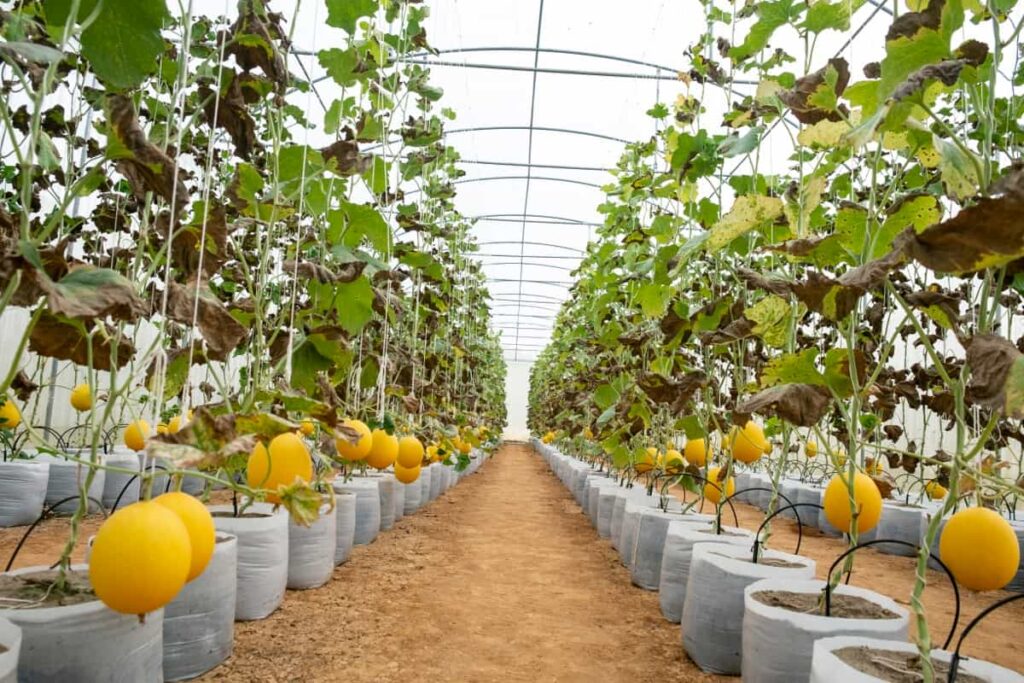
Pesticide selection and application follow strict guidelines to minimize environmental impact and ensure food safety. Regular training and education programs are conducted for greenhouse farmers to enhance their knowledge of pest and disease management techniques, focusing on proper identification, monitoring, and implementation of appropriate control measures.
Greenhouse Automation Technologies in Bangladesh
Bangladesh has implemented key greenhouse automation technologies, including Climate Control Systems, Irrigation and Fertigation Systems, Monitoring and Control Systems, Crop Monitoring and Management, and Automated Harvesting and Sorting. Climate control systems regulate temperature, humidity, and ventilation within the greenhouse, using sensors, controllers, and actuators to maintain optimal growing conditions.
Irrigation and fertigation systems ensure precise water and nutrient delivery, reducing wastage and improving crop health. Monitoring and control enable real-time measures of environmental parameters, allowing farmers to adjust these parameters for optimal plant growth remotely.
Crop monitoring and management systems utilize sensors, cameras, and machine vision to assess crop health, detect diseases, and optimize plant growth through data-driven decision-making. Automated harvesting and sorting systems streamline the process, using robotics and computer vision to identify and pick ripe crops, reducing labor requirements and improving efficiency.
Energy-efficient Practices in Bangladesh Greenhouse Farming
Greenhouse farming in the country employs key energy-efficient practices to maintain optimal temperatures during colder seasons. These practices include energy-efficient heating systems, thermal insulation, LED lighting, efficient water management, integration of renewable energy, monitoring, and optimization. Heating systems utilize technologies like condensing boilers, heat pumps, and biomass heaters to maximize heat output while minimizing energy consumption.
Thermal insulation traps heat and reduces energy requirements, such as double-layered polyethylene films, polycarbonate panels, or energy-efficient glass. LED lights are highly energy-efficient, consuming less electricity than traditional sources while providing sufficient light intensity for plant growth. Water management techniques like drip irrigation and automated irrigation systems help reduce water wastage and energy used for pumping water.
Renewable sources like solar panels and wind turbines can help meet energy demands in greenhouse farming. Energy monitoring and optimization systems enable farmers to track and analyze energy usage patterns, identify inefficiencies, and optimize consumption, ultimately reducing energy waste and improving overall efficiency.
Government Regulations for Greenhouse Farming in Bangladesh
The government in Bangladesh requires greenhouse farming farmers to obtain licenses and register their operations to meet standards and adhere to guidelines. Farmers must provide information on their greenhouse location, size, type, and crops. An environmental impact assessment is also necessary to evaluate the greenhouse’s impact on the environment, including air quality, water resources, and land use. Crop selection and rotation are encouraged, involving diversifying and rotating crops periodically.
In case you missed it: Rosemary Farming Business Plan: A Step-by-Step Guide to Growing and Selling Profitable Herbs
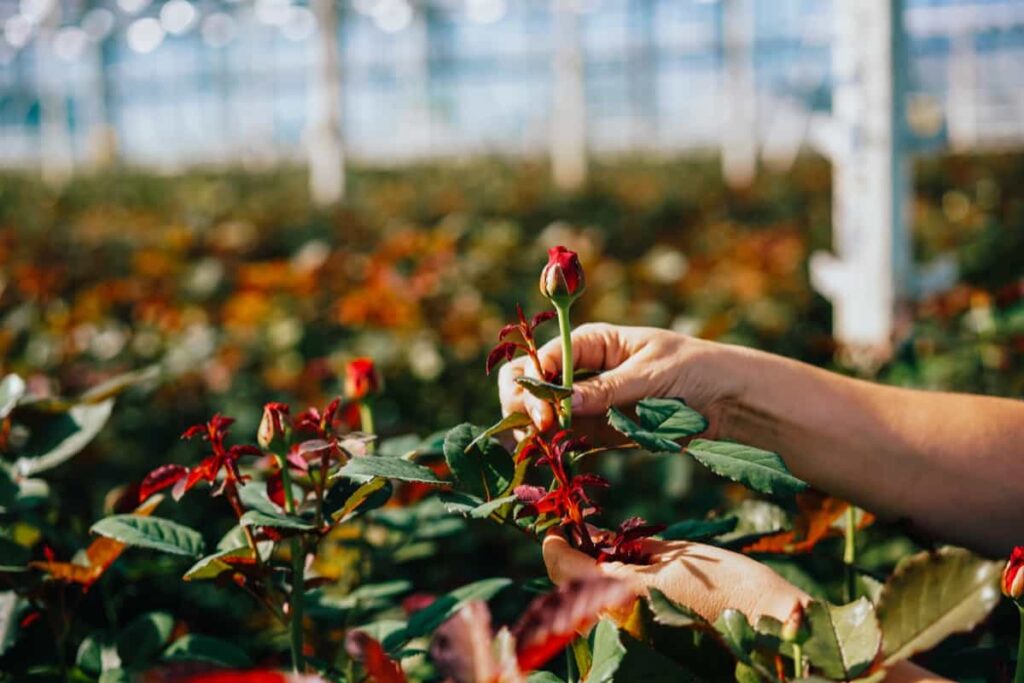
This helps maintain soil fertility, reduce pest and disease risks, and improve productivity. Integrated Pest Management (IPM) techniques are implemented to minimize chemical pesticide use and ensure sustainable pest control. Water management is crucial in greenhouse farming, especially in water-scarce regions. The government promotes water-saving techniques like drip irrigation, hydroponics, and recycling, encouraging farmers to monitor and optimize water usage to reduce wastage and conserve resources.
Market Trends and Opportunities in Bangladesh Greenhouse Farming
Bangladesh’s greenhouse farming industry is experiencing significant growth due to market trends and opportunities. The market value is estimated at USD 65 million in 2021 and is projected to reach USD 102 million by 2026, with a 9.4% CAGR. Investments from domestic and international sources drive expansion.
Key opportunities include producing high-value crops like vegetables, herbs, and flowers in high demand in domestic and export markets. Government support, subsidies, training programs, and infrastructure development create a conducive ecosystem for greenhouse farming, aiming to enhance productivity, reduce post-harvest losses, and increase agricultural sustainability.
Success Stories of Greenhouse Farming in Bangladesh
A greenhouse farm in Gazipur, Bangladesh, has achieved a bumper harvest through organic and modern agricultural practices, including hydroponic technologies. The farm cultivates vegetables, fruits, fisheries, livestock, and dairy. This success showcases the potential of greenhouse farming in Bangladesh and highlights its role in sustainable and diversified agricultural production.
Paramount Agro Limited in Gazipur focuses on organic farming and hydroponic technologies, cultivating various crops. Samriddhi Agro Limited in Dhaka is known for high-quality vegetable production and sustainable practices. Green Delta Agro Farm in Narayanganj specializes in rose cultivation.
In case you missed it: Common Tomato Pests and Diseases: Prevention, Treatment, and Control Management
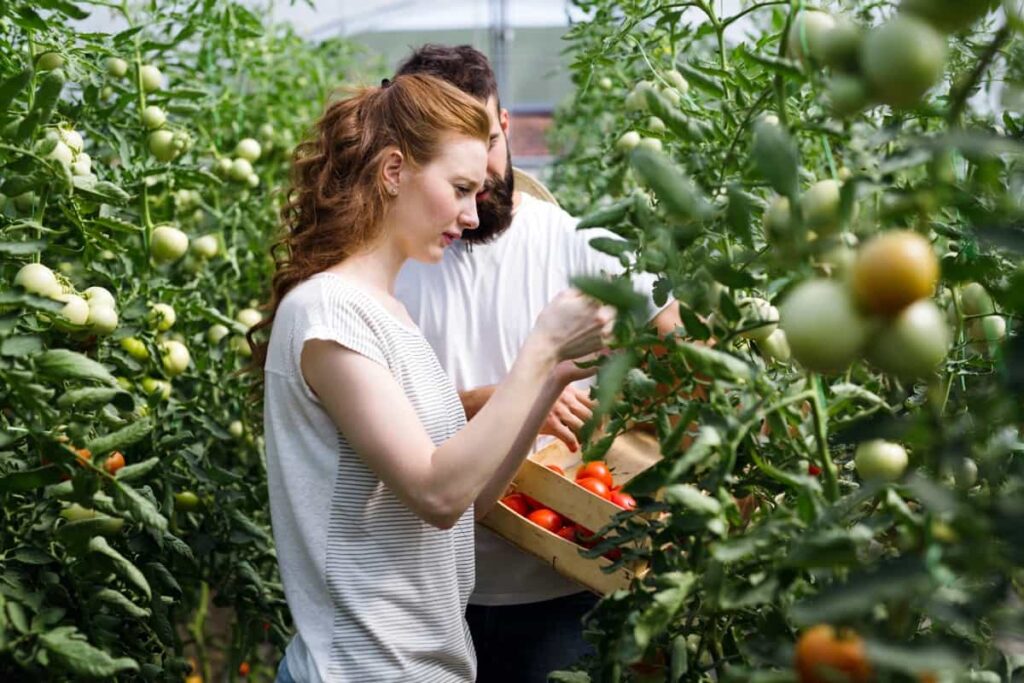
Conclusion
Greenhouse farming in Bangladesh holds significant potential for sustainable agricultural practices and high-quality crop production. With government support, market demand, and technological advancements, the sector is poised for growth, contributing to the country’s food security and economic development.
- How to Raise Pigs in Your Own Backyard: A Comprehensive Guide
- Budget Friendly Sheep Shed Ideas: Cheap and Low-Cost Tips
- How Much Do Cattle Farmers Make: Revenue Streams in Cattle Farming
- Management Pests and Diseases in Your Cotton Field
- Sheep Farming Business Plan for Beginners
- Aquaponic Farming at Home: A Step-By-Step Guide
- Profitable Village Farming Business Ideas in 2024
- High-Yield Aquaculture: Fast-Growing Fish for Farming
- Effective Fish Pond Construction Techniques for Beginners
- Irrigation and Water Management in Pineapple Farming
- Blossom to Harvest: Mastering Flowering and Pollination in Papaya Farming
- Pig Fattening Essentials: From Selection to Sale for Beginners
- Raising Wagyu Cattle: A Complete Guide for Premium Beef Production
- Soil Types and Their Water Holding Capacity
- Optimizing Irrigation Schedules for Coconut Groves for Enhanced Yield
- Espresso Your Garden: Coffee Grounds for Healthier Acid-Loving Plants
- The Best Soil Mix for Snake Plants: How to Mix Your Own Snake Plant Soil
- Green Thumb Success: Expert Tips for Cultivating Greenhouse Beans All Year Round
- Bloom All Year Round: The Ultimate Guide to Indoor Hyacinth Care
- Eco-Friendly Gardening: How to Make Liquid Fertilizer from Kitchen Waste
- Ultimate Guide to Grow Anise in Pots: Explore Seed Propagation to Harvesting
- Guide to Raising Chester White Pigs: Discover Breed Facts to Growth Management
- Mastering the Elegance: The Ultimate Guide to Weeping Cherry Tree Care, Planting, and Maintenance
- Ultimate Guide to Planting Garlic in Grow Bags: Growing Strategies for Beginners
- How to Fix Spider Plant Leaf-Related Problems: Natural and Organic Remedies
- 10 Reasons Why Your Tulsi Plant is Shedding Leaves: Home Remedies and Solutions
- Optimizing Growth and Yield: The Advantages of Palm Bunch Ash Fertilizer
- Utilizing Neem Oil Extract as a Natural Pesticide for Hydrangea
- From Soil to Harvest: Various Ways in Which Farmers Can Use AI Tools
- Steps to Encourage and Induce Citrus Flowers: A Comprehensive Guide
- How to Fix Snake Plant Leaf-Related Issues: Natural and Organic Remedies
- Transform Your Garden into a Fragrant Oasis with Raat Ki Rani (Night Blooming Jasmine)
- Discover the Ideal Chicken Breeds for Philippine Farms
- How to Create a Poultry Egg Farm Business Plan for Profits
- Grow Lemon Cucumbers Like a Pro: Insider Techniques for Bountiful Yields
- Ultimate Guide to Caring for Your Pink Princess Philodendron: Tips for Thriving Variegation

Is there any government donation or Scheme or project that can provide information and cost of materials for farmers like us? Please let me know about details.